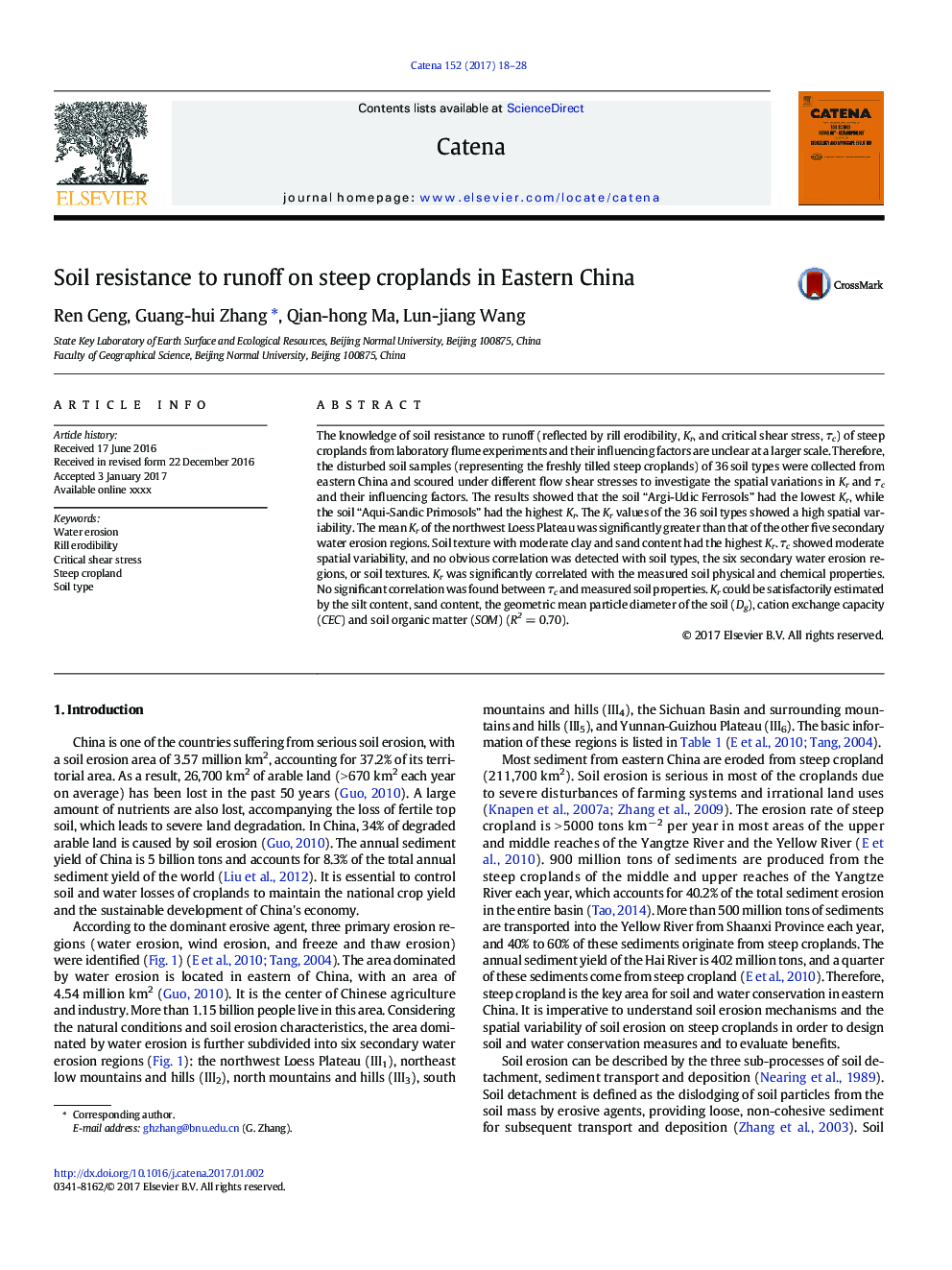| Article ID | Journal | Published Year | Pages | File Type |
|---|---|---|---|---|
| 5769944 | CATENA | 2017 | 11 Pages |
Abstract
The knowledge of soil resistance to runoff (reflected by rill erodibility, Kr, and critical shear stress, Ïc) of steep croplands from laboratory flume experiments and their influencing factors are unclear at a larger scale. Therefore, the disturbed soil samples (representing the freshly tilled steep croplands) of 36 soil types were collected from eastern China and scoured under different flow shear stresses to investigate the spatial variations in Kr and Ïc and their influencing factors. The results showed that the soil “Argi-Udic Ferrosols” had the lowest Kr, while the soil “Aqui-Sandic Primosols” had the highest Kr. The Kr values of the 36 soil types showed a high spatial variability. The mean Kr of the northwest Loess Plateau was significantly greater than that of the other five secondary water erosion regions. Soil texture with moderate clay and sand content had the highest Kr. Ïc showed moderate spatial variability, and no obvious correlation was detected with soil types, the six secondary water erosion regions, or soil textures. Kr was significantly correlated with the measured soil physical and chemical properties. No significant correlation was found between Ïc and measured soil properties. Kr could be satisfactorily estimated by the silt content, sand content, the geometric mean particle diameter of the soil (Dg), cation exchange capacity (CEC) and soil organic matter (SOM) (R2Â =Â 0.70).
Related Topics
Physical Sciences and Engineering
Earth and Planetary Sciences
Earth-Surface Processes
Authors
Ren Geng, Guang-hui Zhang, Qian-hong Ma, Lun-jiang Wang,
